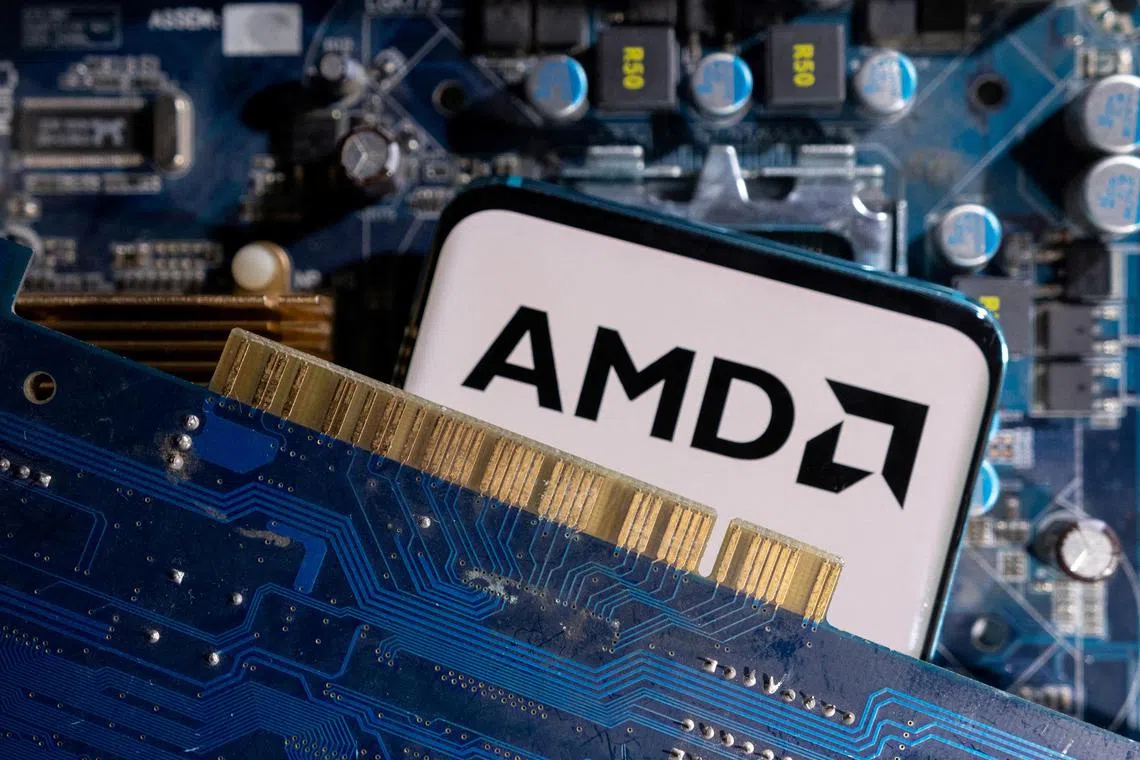AMD raises forecast for AI chip revenue and sees supplies remaining tight
Sign up now: Get ST's newsletters delivered to your inbox

In the second quarter, AMD’s data centre revenue, its biggest segment, jumped 115 per cent to US$2.8 billion.
PHOTO:REUTERS
Follow topic:
BENGALURU/SAN FRANCISCO - Advanced Micro Devices on July 30 increased its 2024 forecast for artificial intelligence chip sales by US$500 million (S$671 million) and said supplies would remain tight through 2025, sending shares of the Santa Clara, California-based company up 7.5 per cent in extended trading.
The AI chips designed by AMD are largely bought by cloud computing giants. Industry insiders and Wall Street view AMD’s line of AI chips as one of the few potentially viable competitors to Nvidia, which dominates the market. Shares of Nvidia rose 4.7 per cent following the AMD report.
AMD counts Meta Platforms as a customer, and Microsoft launched access to a cluster of AMD chips for AI via its cloud platform earlier in 2024.
Because of surging demand, AMD chief executive Lisa Su said, the company boosted its 2024 AI chip revenue forecast to US$4.5 billion from a previous target of US$4 billion. The supply of such chips will remain tight through 2025, Ms Su said during a quarterly results conference call late on July 30.
In the second quarter, AMD’s data centre revenue, its biggest segment, jumped 115 per cent to US$2.8 billion, just topping estimates of US$2.79 billion, according to Visible Alpha. For the first time, its quarterly AI chip revenue – which is largely concentrated in the data centre segment – rose above US$1 billion.
“We are in the picks and shovels cycle which is more about hardware infrastructure right now,” Creative Strategies CEO Ben Bajarin said, making an analogy to the California gold rush, where suppliers of mining tools profited more than some miners. “Most enterprises are spending on AI software but only to trial and pilot programs, (and have) not fully deploy them yet,” he said.
Such massive spending has not yet generated substantial returns. And on July 30, shares of Microsoft fell 6 per cent as growth in its cloud-computing services missed targets, indicating it may take longer for some Big Tech firms to benefit from hefty spending on AI technology.
PC business recovery
Overall, AMD forecast revenue of US$6.7 billion, plus or minus US$300 million, for the third quarter, compared with analysts’ average estimate of US$6.61 billion, according to LSEG data.
On an adjusted basis, the company forecast gross margin of about 53.5 per cent for the third quarter, compared with estimates of 53.6 per cent.
Total revenue in the second quarter rose 9 per cent to US$5.8 billion, which came in above estimates of US$5.72 billion.
AMD, which is among the largest providers of personal computer (PC) chips, also benefited from a recovery in the PC market after its worst slump in years. Computer makers hope new AI features will revive consumer demand.
“(The) PC business actually is going to do better in second half, especially, typically seasonally,” AMD finance chief Jean Hu said.
In the second quarter, AMD reported revenue for PC chips of US$1.5 billion, compared with estimates of US$1.43 billion, according to Visible Alpha.
The company had adjusted second-quarter earnings of 69 US cents per share, topping analyst estimates of 68 US cents a share. REUTERS

